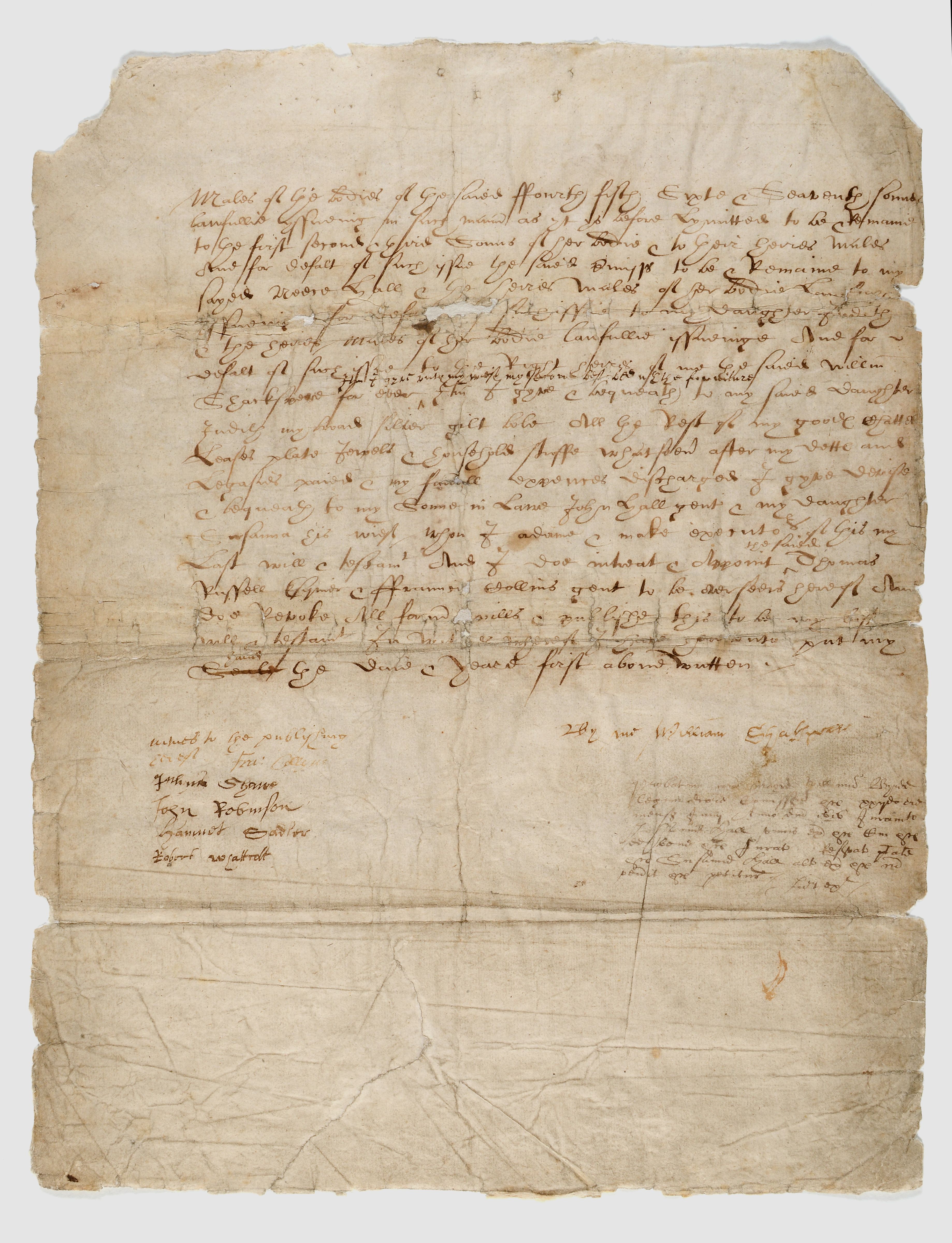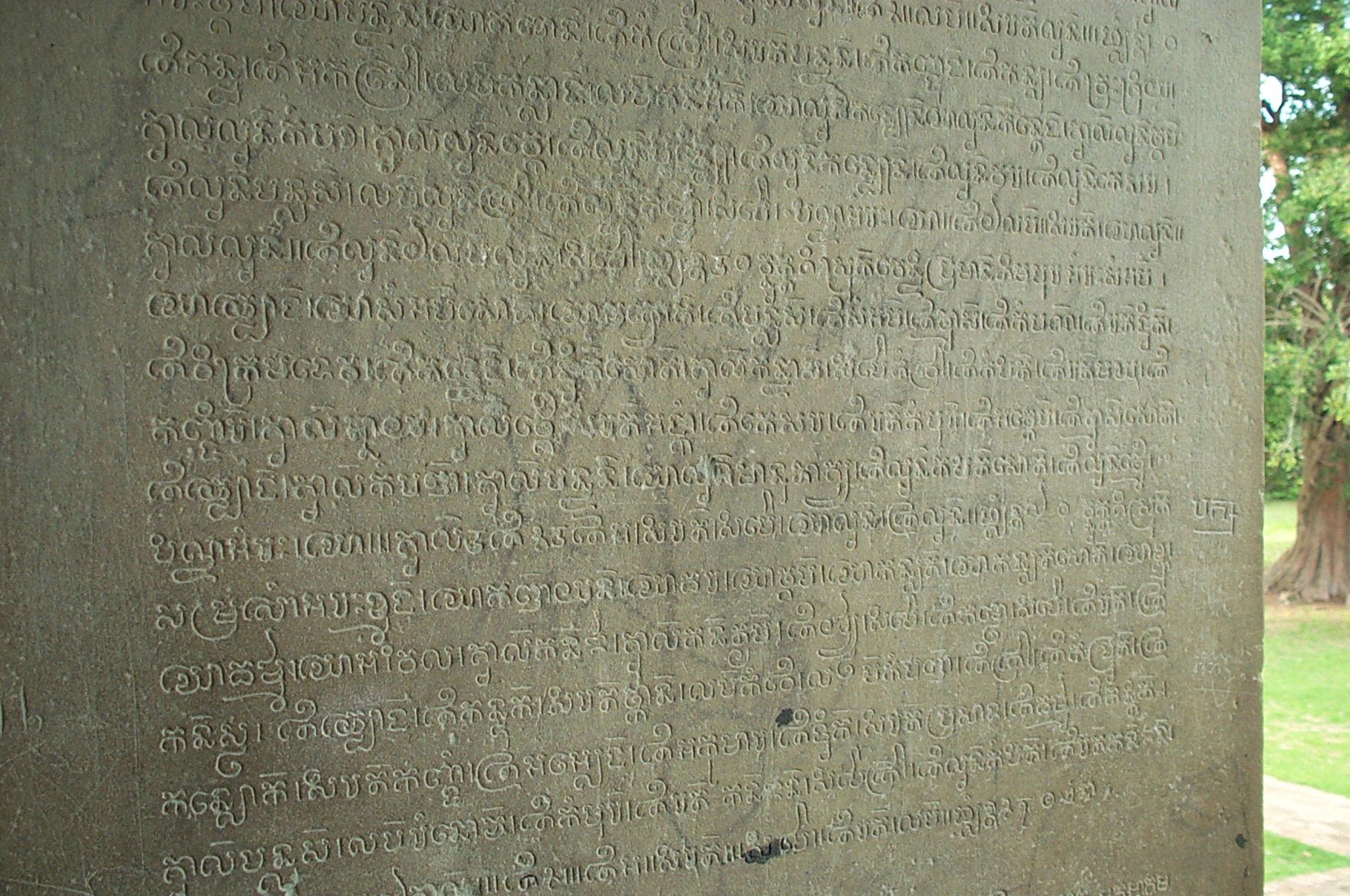|
Scriptio Continua
(Latin for 'continuous script'), also known as or , is a style of writing without spaces or other marks between the words or sentences. The form also lacks punctuation, diacritics, or distinguished letter case. In the West, the oldest Greek and Latin inscriptions used word dividers to separate words in sentences; however, Classical Greek and late Classical Latin both employed as the norm. The ''scriptio continua'' is also known as Latin skeleton script. History Although is evidenced in most Classic Greek and Classic Latin manuscripts, different writing styles are depicted in documents that date back even further. Classical Latin often used the interpunct, especially in monuments and inscriptions. The earliest texts in Classical Greek that used the Greek alphabet, as opposed to Linear B, were formatted in a constant string of capital letters from right to left. Later, that evolved to boustrophedon, which included lines written in alternating directions. The Latin languag ... [...More Info...] [...Related Items...] OR: [Wikipedia] [Google] [Baidu] |
Vergilius Augusteus, Georgica 141
Publius Vergilius Maro (; 15 October 70 BC21 September 19 BC), usually called Virgil or Vergil ( ) in English, was an ancient Roman poet of the Augustan period. He composed three of the most famous poems in Latin literature: the ''Eclogues'' (or ''Bucolics''), the ''Georgics'', and the epic ''Aeneid''. A number of minor poems, collected in the ''Appendix Vergiliana'', were attributed to him in ancient times, but modern scholars generally regard these works as spurious, with the possible exception of a few short pieces. Already acclaimed in his own lifetime as a classic author, Virgil rapidly replaced Ennius and other earlier authors as a standard school text, and stood as the most popular Latin poet through late antiquity, the Middle Ages, and early modernity, exerting inestimable influence on all subsequent Western literature. Geoffrey Chaucer assigned Virgil a uniquely prominent position among all the celebrities of human history in ''The House of Fame'' (1374–85), describi ... [...More Info...] [...Related Items...] OR: [Wikipedia] [Google] [Baidu] |
Paleographer
Palaeography ( UK) or paleography ( US) (ultimately from , , 'old', and , , 'to write') is the study and academic discipline of historical writing systems. It encompasses the historicity of manuscripts and texts, subsuming deciphering and dating of historical manuscripts, as well as the analysis of historic penmanship, handwriting script, signification, and printed media. It is primarily concerned with the forms, processes and relationships of writing and printing systems as evident in a text, document or manuscript; and analysis of the substantive textual content of documents is a secondary function. Included in the discipline is the practice of deciphering, reading, and dating manuscripts, and the cultural context of writing, including the methods with which texts such as manuscripts, books, codices, tracts, and monographs were produced, and the history of scriptoria. This discipline is important for understanding, authenticating, and dating historical texts. However, in the ... [...More Info...] [...Related Items...] OR: [Wikipedia] [Google] [Baidu] |
Tibetic Languages
The Tibetic languages form a well-defined group of languages descending from Old Tibetan.Tournadre, Nicolas. 2014. "The Tibetic languages and their classification." In ''Trans-Himalayan linguistics, historical and descriptive linguistics of the Himalayan area''. Berlin: Mouton de Gruyter. According to Nicolas Tournadre, there are 50 Tibetic languages, which branch into more than 200 dialects, which could be grouped into eight dialect continua. These Tibetic languages are spoken in Tibet, Ladakh, Baltistan, Aksai Chin, Nepal, and in India in Himachal Pradesh, and Uttarakhand. Classical Tibetan is the major literary language, particularly for its use in Tibetan Buddhist scriptures and literature. Tibetan languages are spoken by some 6 million people, not all of whom are Tibetan.preprint With the worldwide spread of Tibetan Buddhism, the Tibetan language has also spread into the western world and can be found in many Buddhist publications and prayer materials, while western s ... [...More Info...] [...Related Items...] OR: [Wikipedia] [Google] [Baidu] |
Vernacular Chinese
Written vernacular Chinese, also known as ''baihua'', comprises forms of written Chinese based on the vernacular varieties of the language spoken throughout China. It is contrasted with Literary Chinese, which was the predominant written form of the language in imperial China until the early 20th century. A style based on vernacular Mandarin Chinese was used in novels by Ming and Qing dynasty authors, and was later refined by intellectuals associated with the May Fourth Movement. This form corresponds to spoken Standard Chinese, but is the standard form of writing used by speakers of all varieties of Chinese throughout mainland China, Taiwan, Malaysia, and Singapore. It is commonly called Standard Written Chinese or Modern Written Chinese to distinguish it from spoken vernaculars and other written vernaculars, like written Cantonese and written Hokkien. Background During the Zhou dynasty (1046–256 BC), Old Chinese was the spoken form of the language, which was re ... [...More Info...] [...Related Items...] OR: [Wikipedia] [Google] [Baidu] |
Japanese Language
is the principal language of the Japonic languages, Japonic language family spoken by the Japanese people. It has around 123 million speakers, primarily in Japan, the only country where it is the national language, and within the Japanese diaspora worldwide. The Japonic family also includes the Ryukyuan languages and the variously classified Hachijō language. There have been many Classification of the Japonic languages, attempts to group the Japonic languages with other families such as Ainu languages, Ainu, Austronesian languages, Austronesian, Koreanic languages, Koreanic, and the now discredited Altaic languages, Altaic, but none of these proposals have gained any widespread acceptance. Little is known of the language's prehistory, or when it first appeared in Japan. Chinese documents from the 3rd century AD recorded a few Japanese words, but substantial Old Japanese texts did not appear until the 8th century. From the Heian period (794–1185), extensive waves of Sino-Ja ... [...More Info...] [...Related Items...] OR: [Wikipedia] [Google] [Baidu] |
Chinese Language
Chinese ( or ) is a group of languages spoken natively by the ethnic Han Chinese majority and List of ethnic groups in China, many minority ethnic groups in China, as well as by various communities of the Chinese diaspora. Approximately 1.39 billion people, or 17% of the global population, speak a variety of Chinese as their first language. Chinese languages form the Sinitic languages, Sinitic branch of the Sino-Tibetan language family. The spoken varieties of Chinese are usually considered by native speakers to be dialects of a single language. However, their lack of mutual intelligibility means they are sometimes considered to be separate languages in a Language family, family. Investigation of the historical relationships among the varieties of Chinese is ongoing. Currently, most classifications posit 7 to 13 main regional groups based on phonetic developments from Middle Chinese, of which the most spoken by far is Mandarin Chinese, Mandarin with 66%, or around 800&nb ... [...More Info...] [...Related Items...] OR: [Wikipedia] [Google] [Baidu] |
Chinese Character
Chinese characters are logographs used to write the Chinese languages and others from regions historically influenced by Chinese culture. Of the four independently invented writing systems accepted by scholars, they represent the only one that has remained in continuous use. Over a documented history spanning more than three millennia, the function, style, and means of writing characters have changed greatly. Unlike letters in alphabets that reflect the sounds of speech, Chinese characters generally represent morphemes, the units of meaning in a language. Writing all of the frequently used vocabulary in a language requires roughly 2000–3000 characters; , nearly have been identified and included in '' The Unicode Standard''. Characters are created according to several principles, where aspects of shape and pronunciation may be used to indicate the character's meaning. The first attested characters are oracle bone inscriptions made during the 13th century BCE in w ... [...More Info...] [...Related Items...] OR: [Wikipedia] [Google] [Baidu] |
Sundanese Script
Standard Sundanese script (''Aksara Sunda Baku'', ) is a traditional writing system used by Sundanese people to write Sundanese language. It is built based on Old Sundanese script (''Aksara Sunda Kuno'') which was used from the 14th to the 18th centuries. History Old Sundanese was developed based on the Pallava script of India, and was used from the 14th until the 18th centuries. The last manuscript written in Old Sundanese script was ''Carita Waruga Guru.'' From the 17th to the 19th centuries, Sundanese was mostly spoken and not written. Javanese script, Javanese and Pegon script, Pegon scripts were used to write Sundanese during this period. In 1996, the government of West Java announced a plan to introduce an official Sundanese script, and in October 1997, the Old Sundanese script was chosen and renamed to ''Aksara Sunda.'' Typology The standardized script has 32 basic characters-- seven vowels, 23 consonants, and thirteen phonetic diacriticals (). There are also numerals ... [...More Info...] [...Related Items...] OR: [Wikipedia] [Google] [Baidu] |
Balinese Script
The Balinese script, natively known as and , (Balinese language, Balinese: ᬅᬓ᭄ᬱᬭᬩᬮᬶ) is an abugida used in the island of Bali, Indonesia, commonly for writing the Austronesian language, Austronesian Balinese language, Kawi language, Old Javanese, and the liturgical language Sanskrit. With some modifications, the script is also used to write the Sasak language, used in the neighboring island of Lombok. The script is a descendant of the Brahmi script, and so has many similarities with the modern scripts of South and Southeast Asia. The Balinese script, along with the Javanese script, is considered the most elaborate and ornate among Brahmic scripts of Southeast Asia.Kuipers, Joel (2003)''Indic Scripts of Insular Southeast Asia: Changing Structures and Functions''. Tokyo: Tokyo University of Foreign Studies. Though everyday use of the script has largely been supplanted by the Latin alphabet, the Balinese script has a significant prevalence in many of the island's ... [...More Info...] [...Related Items...] OR: [Wikipedia] [Google] [Baidu] |
Javanese Script
Javanese script (natively known as ''Aksara Jawa'', ''Hanacaraka'', ''Carakan'', and ''Dentawyanjana'') is one of Indonesia's traditional scripts developed on the island of Java. The script is primarily used to write the Javanese language and has also been used to write several other regional languages such as Sundanese and Madurese, the regional lingua franca Malay, as well as the historical languages Kawi and Sanskrit. It heavily influenced the Balinese script from which the writing system for Sasak developed. Javanese script was actively used by the Javanese people for writing day-to-day and literary texts from at least the mid-16th century CE until the mid-20th century CE, before it was gradually supplanted by the Latin alphabet. Today, the script is taught in the Yogyakarta Special Region as well as the provinces of Central Java and East Java as part of the local curriculum, but with very limited function in everyday use. Javanese script is an abugida writing sy ... [...More Info...] [...Related Items...] OR: [Wikipedia] [Google] [Baidu] |
Khmer Alphabet
Khmer script (, )Huffman, Franklin. 1970. ''Cambodian System of Writing and Beginning Reader''. Yale University Press. . is an abugida (alphasyllabary) script used to write the Khmer language, the official language of Cambodia. It is also used to write Pali in the Buddhist liturgy of Cambodia and Thailand. Khmer is written from left to right. Words within the same sentence or phrase are generally run together with no spaces between them. Consonant clusters within a word are "stacked", with the second (and occasionally third) consonant being written in reduced form under the main consonant. Originally there were 35 consonant characters, but modern Khmer uses only 33. Each character represents a consonant sound together with an inherent vowel, either ''â'' or ''ô''; in many cases, in the absence of another vowel mark, the inherent vowel is to be pronounced after the consonant. There are some independent vowel characters, but vowel sounds are more commonly represented as depe ... [...More Info...] [...Related Items...] OR: [Wikipedia] [Google] [Baidu] |
Lao Alphabet
Lao script or Akson Lao ( ) is the primary script used to write the Lao language and other languages in Laos. Its earlier form, the Tai Noi script, was also used to write the Isan language, but was replaced by the Thai script. It has 27 consonants ( ), 7 consonantal ligatures ( ), 33 vowels (/ ), and 4 tone marks ( ). The Lao abugida was adapted from the Khmer script, which itself was derived from the Pallava script, a variant of the Grantha script descended from the Brāhmī script, which was used in southern India and South East Asia during the 5th and 6th centuries AD. Akson Lao is a sister system to the Thai script, with which it shares many similarities and roots. However, Lao has fewer characters and is formed in a more curvilinear fashion than Thai. Lao is written from left to right. Vowels can be written above, below, in front of, or behind consonants, with some vowel combinations written before, over, and after. Spaces for separating words and punctuation wer ... [...More Info...] [...Related Items...] OR: [Wikipedia] [Google] [Baidu] |






